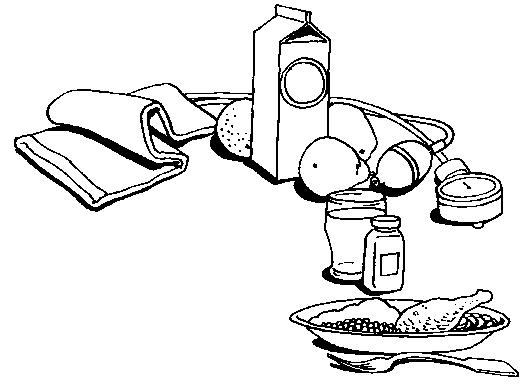 |
 |
|
|
|
|
|
FAQs
(Frequently Asked Questions)
What is the difference between sodium and salt?
Sodium is considered to be a major mineral, which means that it is required in the body in amounts greater than 100 milligrams each day.
Sodium is actually a part of salt, which is sodium chloride. By weight, salt is 39.3% sodium and 60% chloride (Krause's Food, Nutrition, and Diet Therapy; edited by L. Kathleen Mahan, Sylvia Escott-Stump. - 10th ed. W.B. Saunders Co., 2000).
UP
How much sodium is in a certain amount of salt?
|
|
|
It might be helpful to note that 1 teaspoon of baking soda contains 1000 mg sodium.
UP
Yes. Sodium performs essential functions in the body.Was I born with a love for salty foods?
It is involved in nerve transmission, and it plays a major role in the maintenance of fluid balance (the flow of liquids into and out of cells).
UP
Probably not. Newborns have four primary tastes: sweet, sour, bitter, and salty. Sweet foods, they will embrace. Sour or bitter foods, they will reject. Salty foods, newborns can take them or leave them. (April 2001, American Dietetic Association: http://www.eatright.org/nfs/nfs0399.html).
UP
How much sodium do average Americans consume in their diet?
The average American consumes approximately 4,000 to 6,000 milligrams of sodium daily, much more than the the 2,400 milligrams recommended by many scientific groups. (Krause's Food, Nutrition, and Diet Therapy; edited by L. Kathleen Mahan, Sylvia Escott-Stump. - 10th ed. W.B. Saunders Co., 2000).
UP
What are common sources of dietary sodium?
Up to 20% of the sodium Americans consume comes from salt added to food during preparation or at the table.
Between 35% and 80% of dietary sodium comes from processed foods.
Convenience foods contain the most sodium in the form of salt and food additives.
High amounts of salt are found in processed meats such as bacon, sausage and ham, in canned soups and vegetables, and in many frozen foods.
Most restaurant food is also high in sodium.
Sodium occurs naturally in most foods and is even present in drinking water (Krause's Food, Nutrition, and Diet Therapy; edited by L. Kathleen Mahan, Sylvia Escott-Stump. - 10th ed. W.B. Saunders Co., 2000).
UP
Why is sodium added to processed foods?
Convenience foods - designed to be quick and easy to transport, store prepare and eat - need stabilizers, preservatives and ingredients to improve taste. Sodium serves these functions. Some common food additives are: monosodium glutamate (MSG), sodium nitrite, sodium saccharin, baking soda or sodium bicarbonate, and sodium benzoate. Other sodium-containg compounds include sodium caseinate, trisodium phosphate, sodium ascorbate, and sodium stearoyl lactylate.
UP
Salt or sodium imbalance occurs when there's too little or too much sodium in the bloodstream. When there is too little sodium in the bloodstream, the condition is called hyponatremia. Too much sodium in the bloodstream is called hypernatremia. More information may be obtained at http://health.discovery.com/diseasesandcond/encyclopedia/3149.html.How is blood pressure related to sodium?
UP
 |
High sodium diets are often linked to high blood pressure (hypertension), but other contributing factors include family history, age, smoking, being overweight, and a sedentary lifestyle. Also, some ethnic groups, such as African Americans have a higher incidence of hypertension. Low sodium diets are associated with a low prevalence of hypertension. Scientific evidence indicates that, in many but not all individuals, reducing sodium intake can lower blood pressure and its associated risks. In other words, going easy on salt and sodium will not prevent hypertension, but it may lower blood pressure (April 2001, American Dietetic Association: http://www.eatright.org/nfs/nfs0399.html).
UP
DASH stands for Dietary Approached to Stop Hypertension. This eating plan is rich in low-fat dairy foods, fruits, and vegetables. It is also rich in calcium, magnesium, and potassium, which are minerals thought to be beneficial to blood pressure. Link to the Harvard Medical School sponsored web site http://dash.bwh.harvard.edu for information on the DASH eating plan, or check out the Links page for other links containing more about DASH.
| HOME | UP |